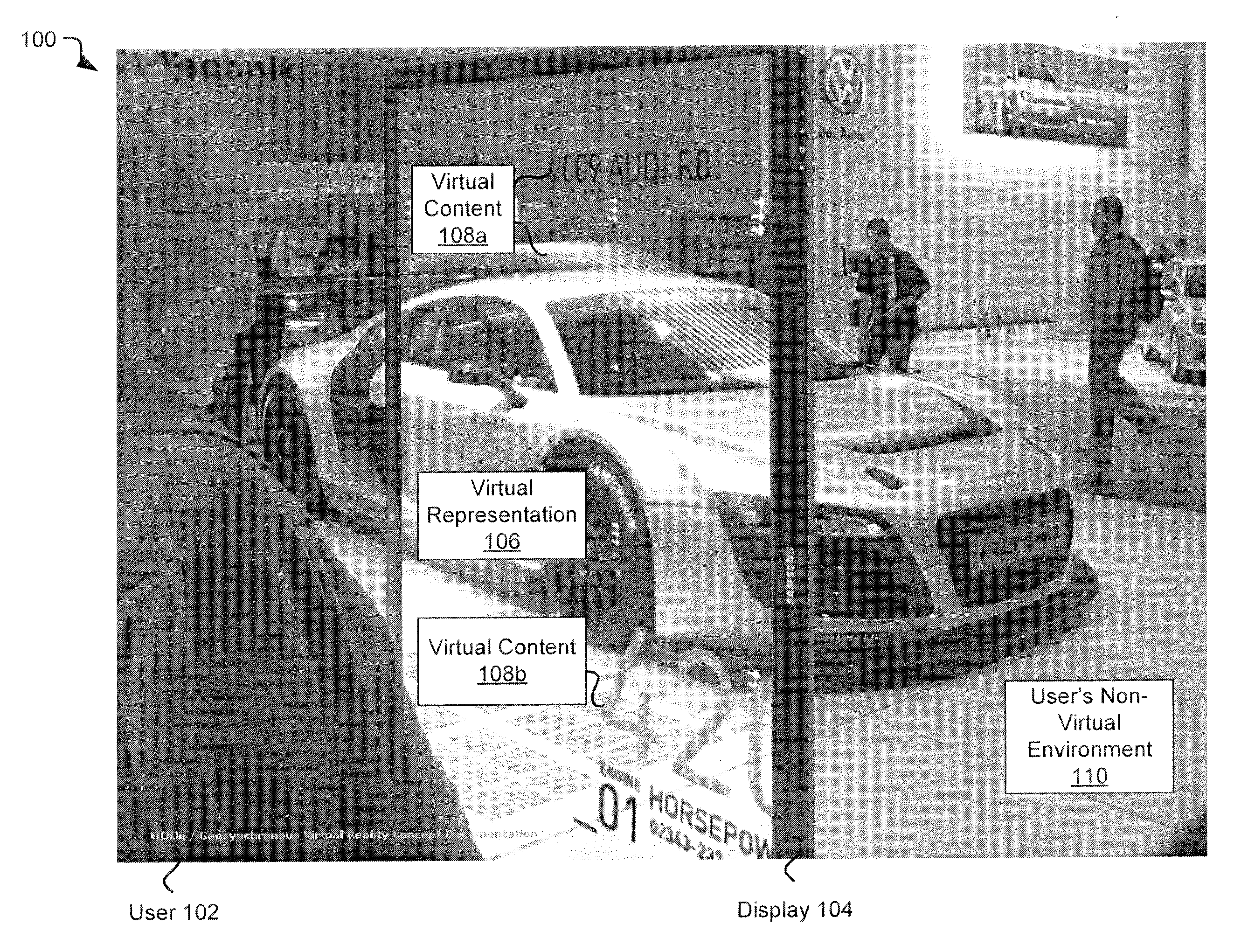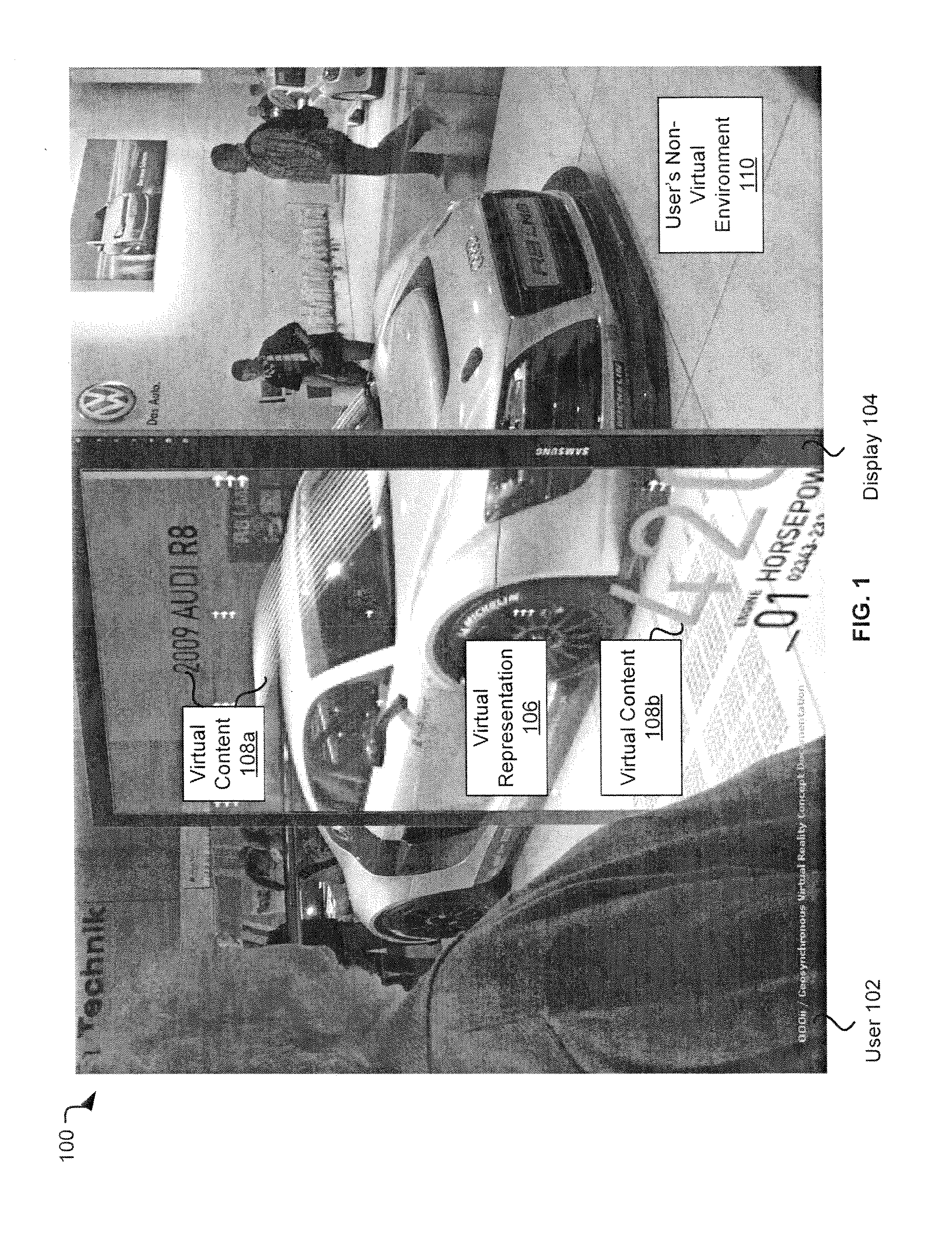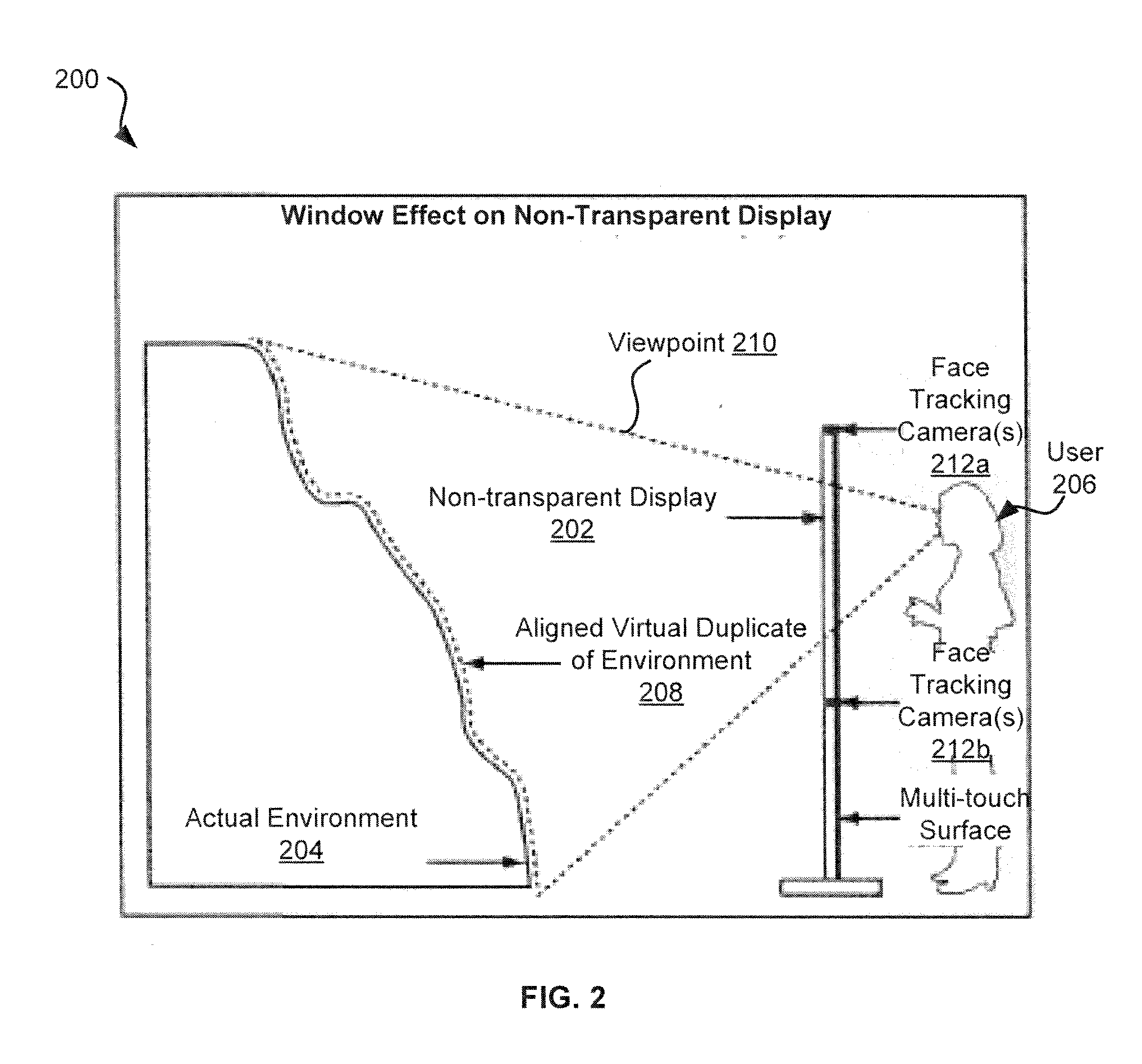Head and arm detection for virtual immersion systems and methods
a technology of virtual immersion and head and arm detection, applied in the field of display of virtual environments, can solve the problems of inherently problematic interactions between physical environment/objects and virtual content, image quality, aesthetic continuity, etc., and achieve the effect of improving quality
- Summary
- Abstract
- Description
- Claims
- Application Information
AI Technical Summary
Benefits of technology
Problems solved by technology
Method used
Image
Examples
Embodiment Construction
[0042]Exemplary systems and methods described herein allow for user interaction with a virtual environment. In various embodiments, a display may be placed within a user's non-virtual environment. The display may depict a virtual representation of at least a part of the user's non-virtual environment. The virtual representation may be spatially aligned with the user's non-virtual environment such that the user may perceive the virtual representation as being a part of the user's non-virtual environment. For example, the user may see the display as a window through which the user may perceive the non-virtual environment on the other side of the display. The user may also view and / or interact with virtual content depicted by the display that is not a part of the non-virtual environment. As a result, the user may interact with an immersive virtual reality that extends and / or augments the non-virtual environment.
[0043]In one exemplary system, a virtual representation of a physical space...
PUM
 Login to View More
Login to View More Abstract
Description
Claims
Application Information
 Login to View More
Login to View More - R&D
- Intellectual Property
- Life Sciences
- Materials
- Tech Scout
- Unparalleled Data Quality
- Higher Quality Content
- 60% Fewer Hallucinations
Browse by: Latest US Patents, China's latest patents, Technical Efficacy Thesaurus, Application Domain, Technology Topic, Popular Technical Reports.
© 2025 PatSnap. All rights reserved.Legal|Privacy policy|Modern Slavery Act Transparency Statement|Sitemap|About US| Contact US: help@patsnap.com



